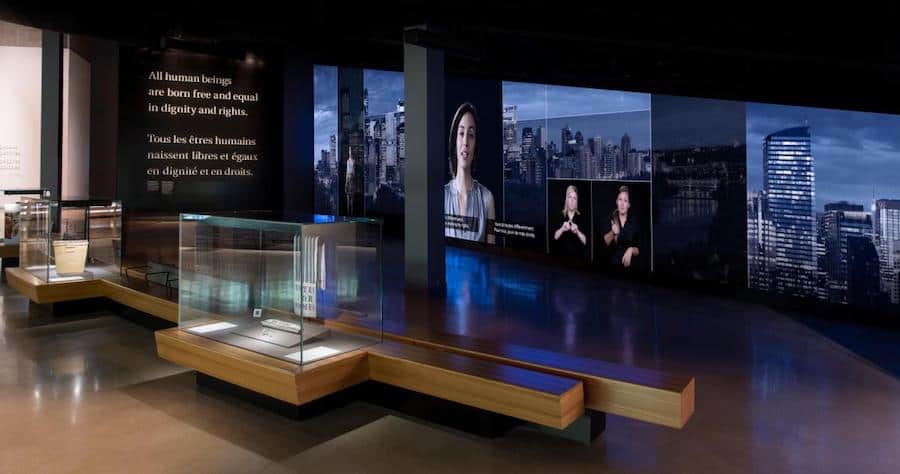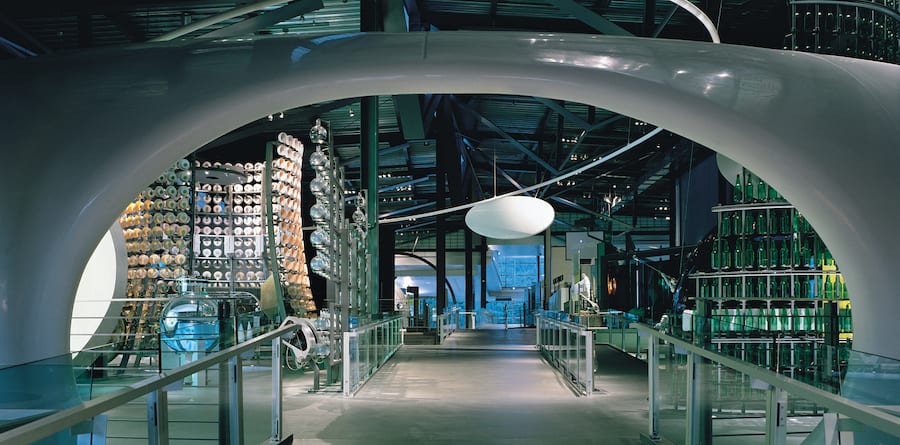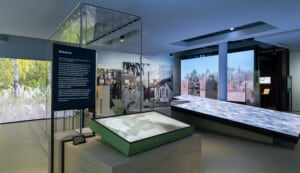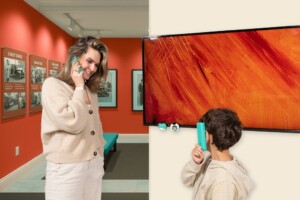What are museums going to look like after the COVID-19 pandemic, and can that question shine a new light on long-standing accessibility issues?
By Erika Kiessner, GSM Project
 The museum industry, like every other, is reeling from the ongoing changes in the world around us. Some visitors are eager to get back to museums. However, outreach has shown that others are concerned about the safety of doing so.
The museum industry, like every other, is reeling from the ongoing changes in the world around us. Some visitors are eager to get back to museums. However, outreach has shown that others are concerned about the safety of doing so.
This is especially true for hands-on museums, with interactive exhibits that people touch and manipulate. Museums that focus on using touch for interaction, like children’s museums and most science and technology centres, will be forced to rethink the role of touch in public spaces.
Accessibility – safer museum exhibitions, impacts and design changes
This is exactly the right moment to look at the way we design interactives for our visitors. While we consider how to make our exhibitions safer, it is also a chance to refresh our interactive exhibits to make them more accessible to everyone. The question is how?

In this spirit, GSM Project hosted a webinar to discuss what accessibility will look like for museums, both during and after COVID-19. As part of the series ‘Cocktails with Creatives’, this webinar featured the voices of Corey Timpson, Sina Barham, Jean-Philippe Charbonneau. It was moderated by Erika Kiessner.
Together we discussed some of the changes we are looking for in the coming months and years. We also talked about how to adopt new techniques for reducing barriers to access in our exhibitions.
Short and long term impacts
The short-term impacts and long-term impacts of the pandemic are not the same. The requirements that we are facing today will not be the same as those ten, five, or even two years from now. But the need to make our work accessible will remain. And doing so properly will require including voices of all types in the process.
Designing with empathy means that you are talking with and involving people of all abilities and backgrounds in the design process
“Designing with empathy means that you are talking with and involving people of all abilities and backgrounds in the design process,” says Barham. “At the earliest phases possible, we need to incorporate this lensing of inclusivity and access into the work and realize that it is a journey in which, it’s going to be okay the first time, better the next, better the next, a cumulative effect.”
For now, many exhibits will need a design overhaul to make visitors feel comfortable using them again. In plenty of cases, this may mean removing touch interactivity completely. But no-touch does not have to mean passive. In fact, the needs of this time may result in changes that are permanently beneficial.
Technology is ready if we are
We discussed what kinds of technologies are available today, like gesture and web technologies. But there is no magic solution that will quell everyone’s concerns. We are doing our best to clean touchable surfaces, but that is a Band-Aid solution at best.
There are many technologies on the market that enable no-touch interactions. Some of these use movement, like Kinect type sensors, ultrasonic range finders, and other motion sensors. Others use voice commands and control.

However, the no-touch aspect is only one type of interaction they address. Creatively using these technologies enables exhibit designers to create different and multi-layered interactions.
An example raised by Timpson is the large audio-video experience at the Canadian Museum of Human Rights in Winnipeg, where sound was used as a key way to bring the audience into the experience that added to the visual impact.
Muti-modal designs
This brought us to discuss the benefits of multi-modal designs, which are those that communicate through more than one sense. This type of design ensures that visitors that either prefer or require, say, audio over video have the luxury of engaging that way; or those who prefer touch to listening have the chance to do that too.
This layering of modes creates a variety of entry points that visitors use to engage with our work. These redundant layers are actually critical because they enable enjoyment for a broader swath of our audience.

We have long had the ability to take advantage of this in our exhibitions. As Charbonneau points out awareness of the issue is the first step, so that more teams understand the benefits of applying this in their exhibitions.
Multimodality is not limited to the accessibility design of the museum exhibits. For example, using changes in floor texture and sound for wayfinding, in addition to signage, may seem like subtle cues for sighted visitors. However, for those who do not rely on sight to navigate, they offer salient and useful information about a journey.
Just like with other interfaces, this can be leveraged by selecting our architectural materials wisely and by using soundscapes to create variation from gallery to gallery, as Barham explained with his description of walking through the Corning Museum of Glass.
Museum accessibility
Using the features of the space around us, we can make environments that fluidly serve everyone. A classic example of this is the curb-cut. This small ramp at the corner of a sidewalk was originally intended to serve people in wheelchairs. However, once they were installed in cities, they were useful for many. For instance, those with a bike, a stroller, a suitcase, a pushcart, or a skateboard.
Designs intended to meet the specific needs of one group often end up benefitting everyone. The curb-cut example also serves as an excellent reminder that people have different needs at different times in their lives. A broken leg, an uncomfortable pregnancy, or a medical complication can cause us to interact with the world in a different way than we usually do.

Museum design with accessibility at its core opens doors and reduces barriers for many. Not only disabled visitors but many others as well.
It’s critical, however, to remember that the curb can also cut the other way. We must remain ever vigilant that the designs we implement with an eye towards improving one aspect of the user experience do not create barriers for other users.
“We have a design intent and the visitors coming in have a user intent,” Timpson reminds us. “So, when those intentions don’t line up, that’s when a barrier is created. What we want to do is understand the intentions of our audience as we’re creating our design intentions. If we do that, then we’re going to mitigate as many of those barriers as possible.”
More accessible interaction is better interaction
As we focus on wider museum accessibility, we are also advancing the goals of our institutions.
“We’re seeding greater engagement, deeper engagement, and we’re facilitating that ultimate objective which is knowledge and sharing,” says Timpson. “So, I think if we want to look at it through a technical lens, ensuring attention to this approach is only better satisfying the mission and mandate of the organization.”
Human interaction on the museum floor is one of the most powerful interaction tools we have
At the end of the day, human interaction on the museum floor is one of the most powerful interaction tools we have. This moment is not taking that tool away from us. But it is causing us to look at the tool itself through a new lens.
“We remember how we felt about things from decades ago, even though the specifics might be fuzzy,” says Barham. “So, we should try to impart that feeling of welcome in everything we do. And what better way to do that than with fellow human beings on the floor.”
This conversation was part of GSM Project’s summer webinar series ‘Cocktails with Creatives‘ – the whole discussion is available here, with closed captions.





